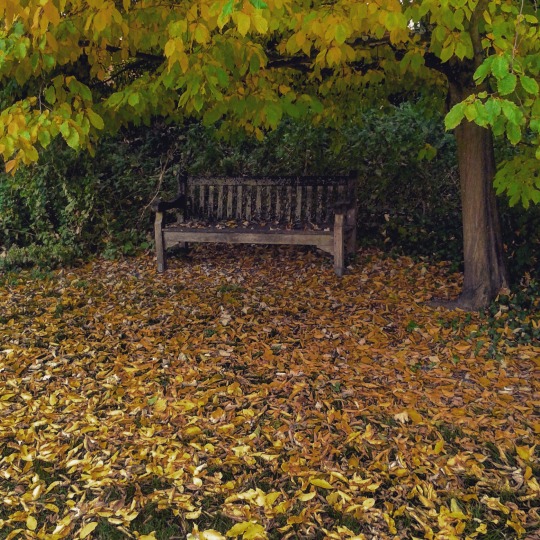
Saffron Walden
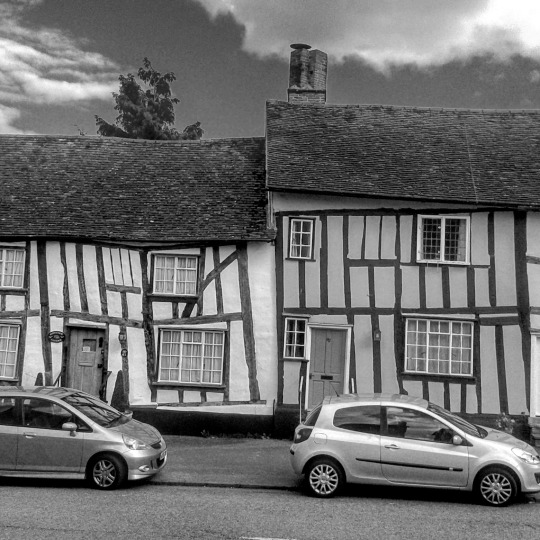
Lavenham
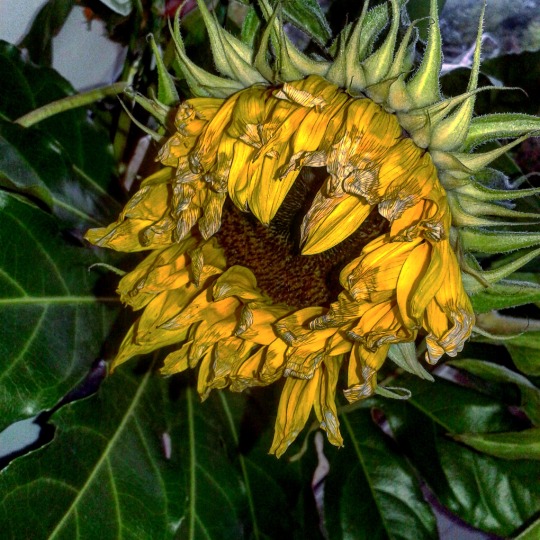
Hildersham
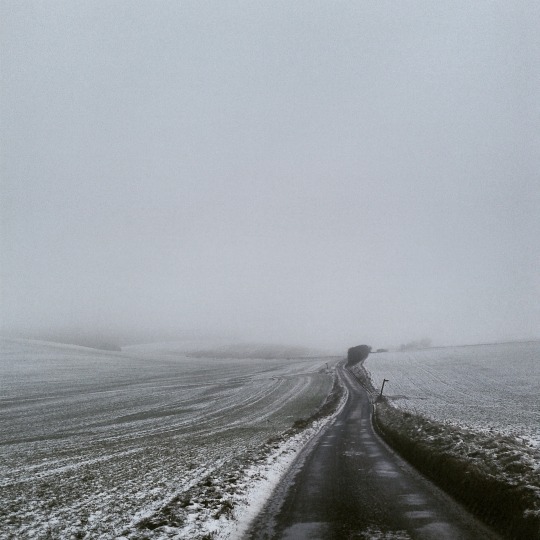
Littlebury
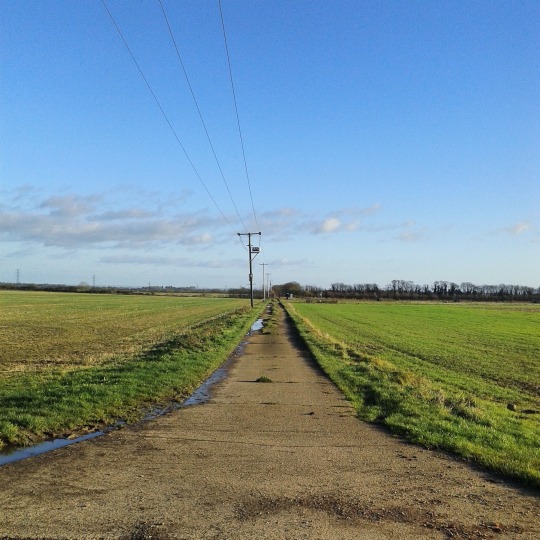
Knapwell
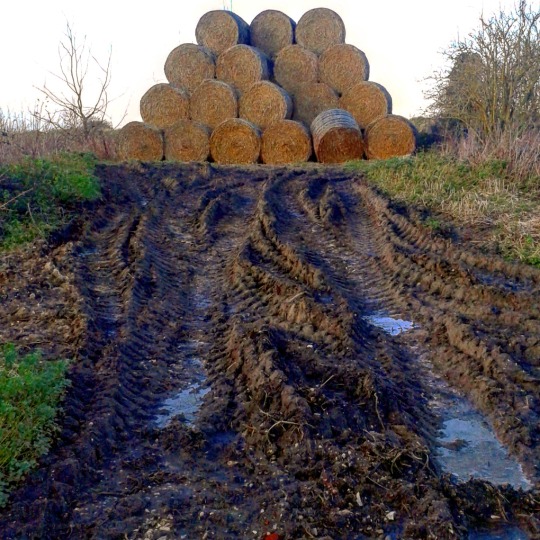
Diss
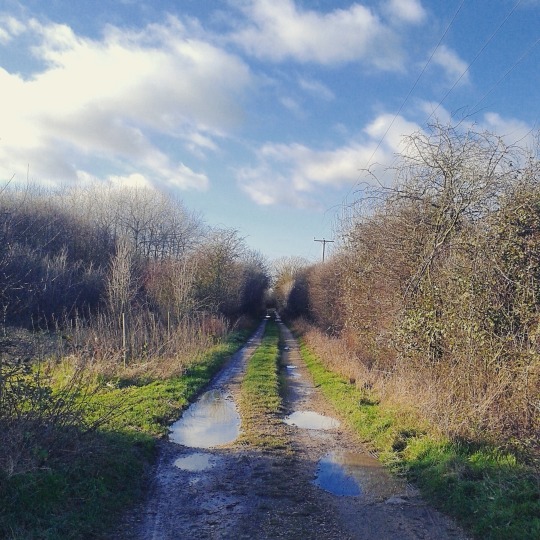
Knapwell
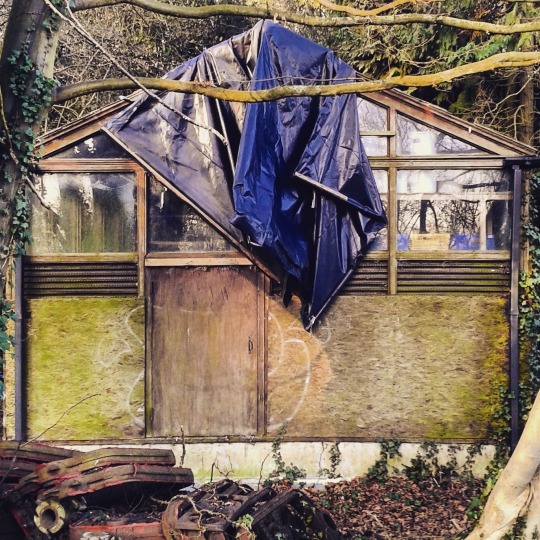
Cambridge
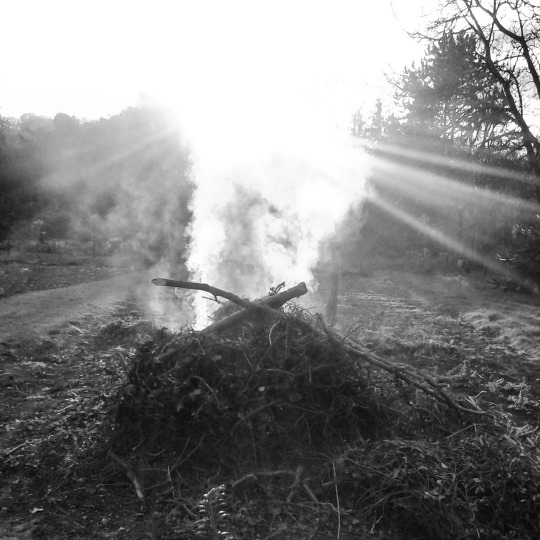
Hoxne
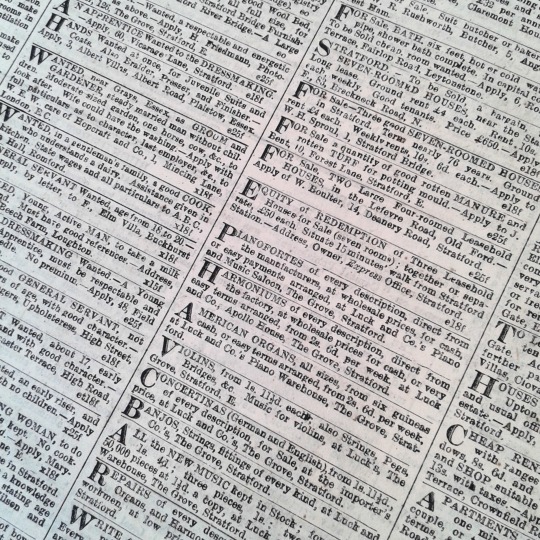
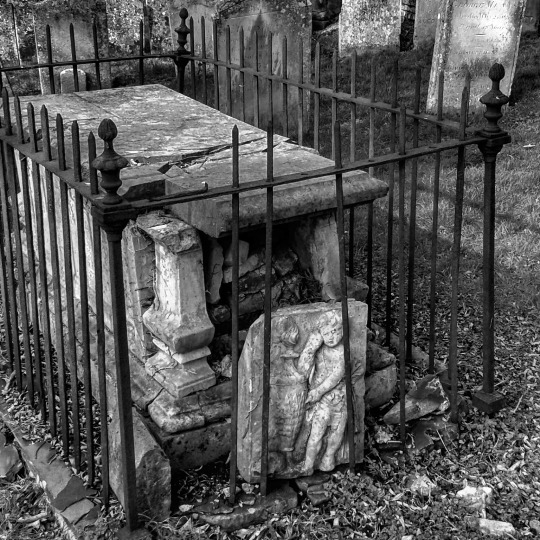
St Ives, Cambridgeshire
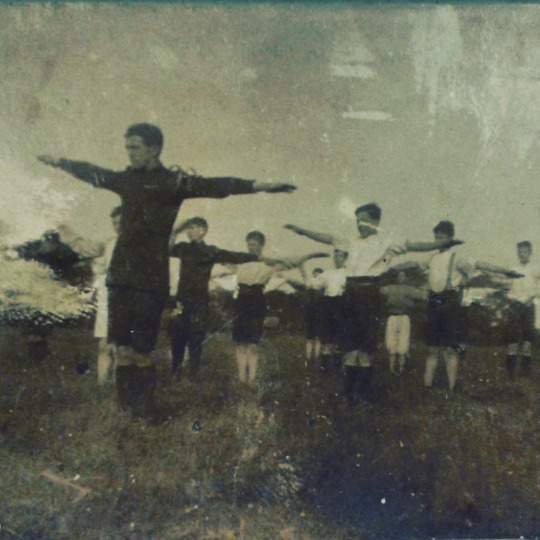
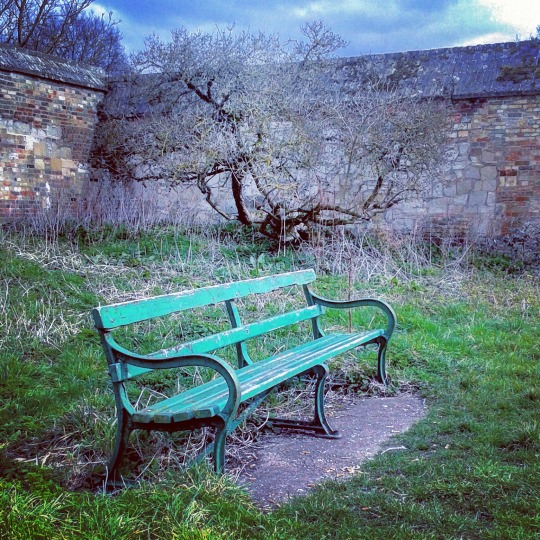
Cambridge
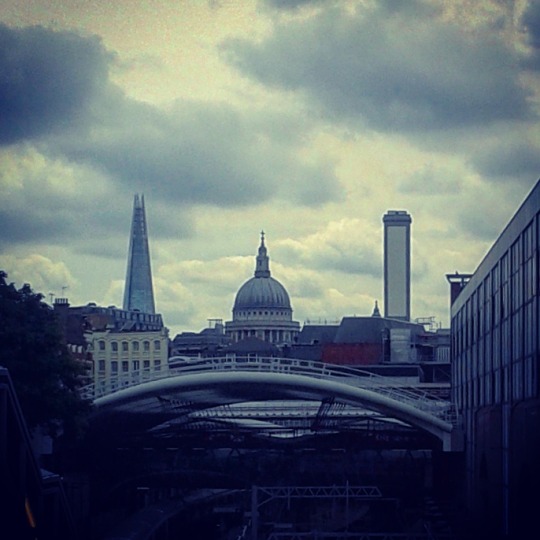
Islington
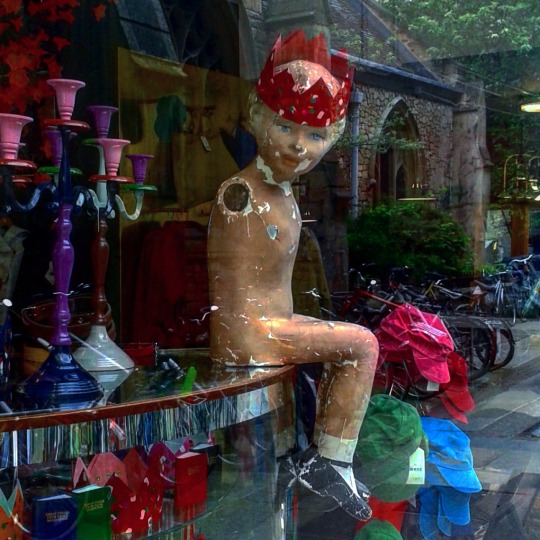
Cambridge
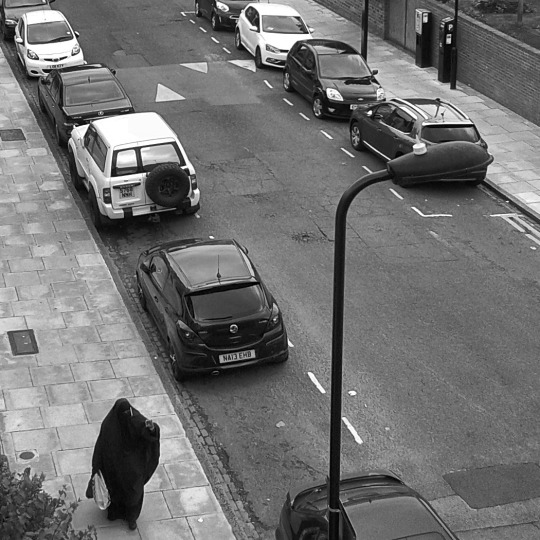
Hackney
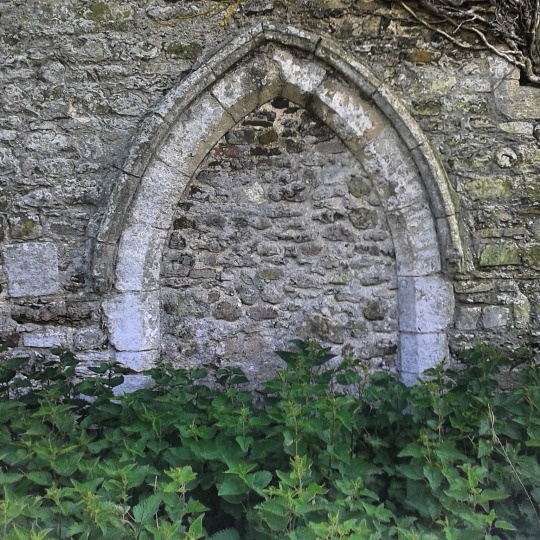
Babingley

Madingley

Madingley
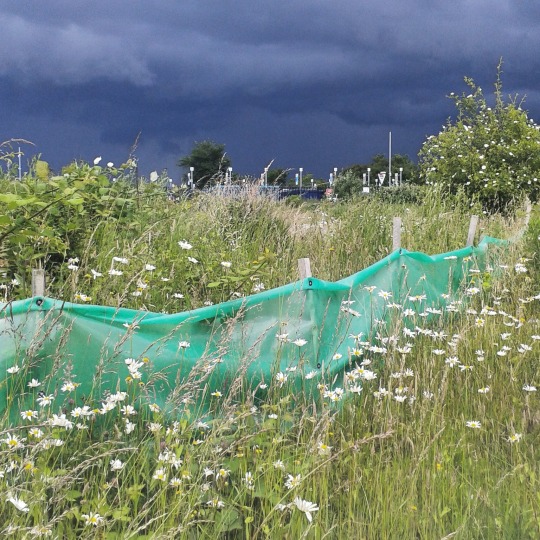
Saffron Walden
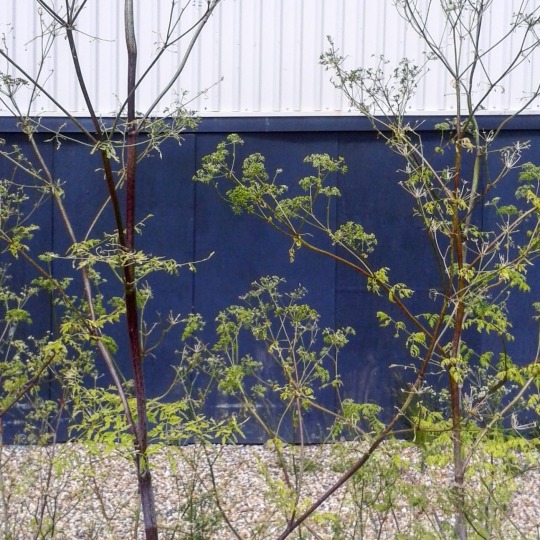
Saffron Walden

Saffron Walden

Lavenham

Hildersham

Littlebury

Knapwell

Diss

Knapwell

Cambridge

Hoxne


St Ives, Cambridgeshire


Cambridge

Islington

Cambridge

Hackney

Babingley

Madingley

Madingley

Saffron Walden

Saffron Walden
Magazines in second hand book and charity shops are treated with various levels of scorn, I am guessing it’s because they don’t stack on a shelf easily and can look untidy. It’s a shame as some are full of adverts and illustrations that are not found anywhere else.
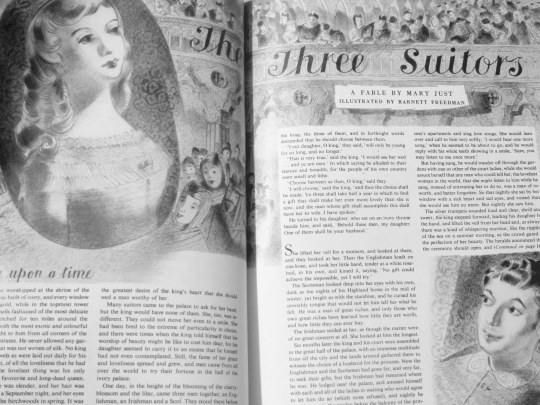
Here is one piece illustrated by Barnett Freedman from the Housewise Magazine in the 1950s. Although there maybe more, I have never seen Freedman illustrate a magazine artical. It’s a simple monochrome print with the focus was on the draftsmanship.
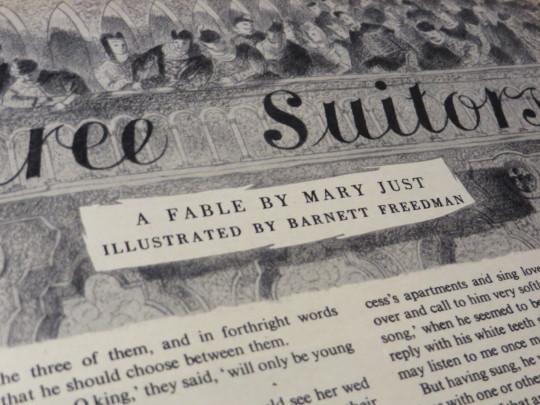
Many of Freedman’s book dust jacket designs are like this too, but with a simple colour wash behind them, he was very economic with colour – in printing terms. With his marvellous free-drawn typefaces and grainy illustration, with closer views you can see the picture is of a theatre and the balcony with the audience looking down on the artical. The heroin is in a locket cameo to the left and the hero to the bottom right. Short simple and I hope an unusual sight for those who know Freedman’s work.
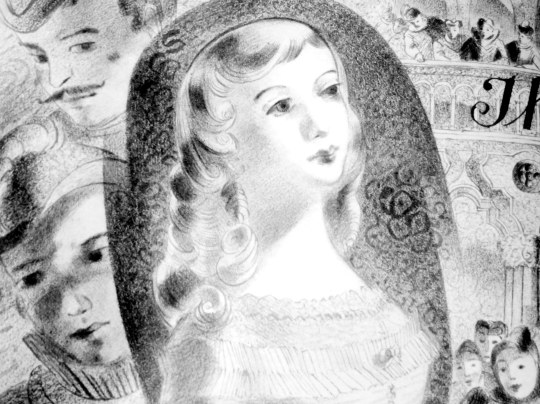
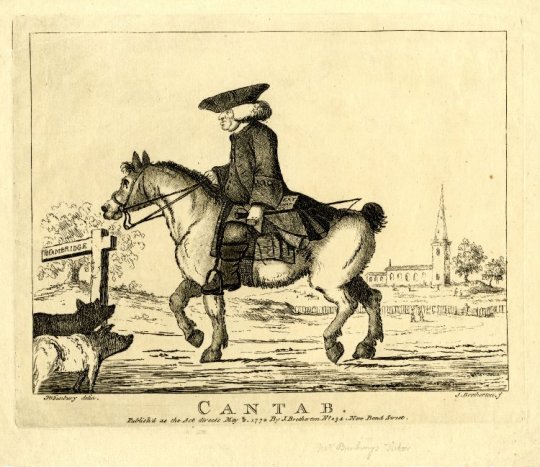
Cantab by Bretherton / Bunbury. Image from the British Museum collection.
Yesterday I bought an etching. Printed in 1772 by James Bretherton after the drawing by Henry William Bunbury. It’s shows a man, likely a priest, travelling by the river. The church in the background is Chesterton church (back then it was surrounded by fields) and the path there left the river toward the town.
His direction confused me for a short while until I remembered there were no bridges on the lower end of the Cam, only ferrymen. The sign to the left shows, he was heading To Cambridge, so not yet there, hence Chesterton.
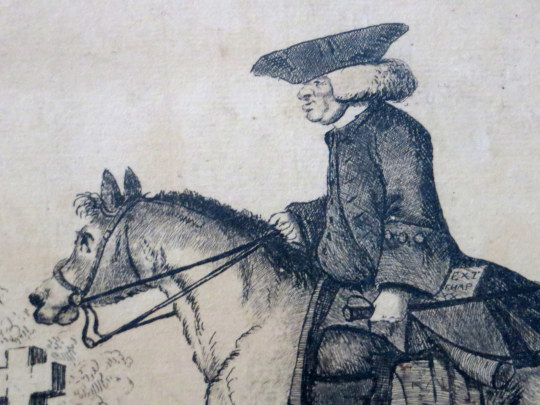
Detail of Cantab by Bretherton / Bunbury.
Although many of the prints published by Bunbury were satires, I am unsure of the joke; it may just show the wealth of the clergy in the time of George III and the purpous of the dogs in the bottom left to be the poor. Even without the comedy it’s a beautiful picture in it’s original frame and glass.
In the Archives of the Tate are over a thousand photographs taken by Paul Nash that were donated by the Paul Nash Trust in 1970. Many of the photographs by Nash where studies for paintings but on their own they are surreal marvels. Mostly taken during the 1930s and 40s, the photos sometimes have no date and a guessed idea of the location.
Below are my favourite out of all of the pictures processed, I chose 17 in all. A good deal of them have not been editioned in books or as prints. I have tried to order them in a way I think looks pleasing.
The text I have taken from the large Fischer Fine Art folio of 25 prints by Paul Nash in 1978, in the 25 photographs John Piper picked out, it’s curious how I have selected none of the same images. I have included it as it’s the best and most brief summery of Nash’s talents, and it’s always nice to hear from John Piper.
Paul Nash took photographs for the last sixteen years of his life; that is to say, from 1930 when he was given an American Kodak. The camera was adequate to his purpose and he never became involved enough in the technique of photography to buy himself a more elaborate one or bother with wide-angle or other lenses or even to use a tripod. But his snapshots were neither indiscriminate nor trigger-happy.
As in everything, he was as professional as he needed to be. If he wanted to take something and the sun was not out, he would wait for it; if he wanted a shadow at a certain angle, he would wait for it. He would stalk the Uffington White Horse or Maiden Castle or the stones at Avebury until the place and the light were right and his friends who drove him would have to wait and stalk too. It was often anxious for them and difficult for him since he was seldom well and that kind of effort and concentration was exhausting.
Paul had an economical and obsessive eye and his new toy at once became a valuable weapon. The very first photographs that he took on the way to the United States related to the preoccupations of his painting; a ship’s mast and rigging was a slender echo and anticipation of the open cage structure he often used, the complicated interplay of hard edges and hollowed shadows within the curve of a life-boat proclaimed his interest in the mystery of ordinary things seen from unordinary angles.
No one could have been a less doctrinaire or literary surrealist but he had a punning vision which, with his aptitude for analogue, made his instinctive reaction to the world very close to the more self-conscious and sophisticated surrealist one. His wit with the camera was a natural extension of the wittiness of his words and of his attitude to life. He loved to see the funny side of things without being destructive so the objects that he photographed at Swanage, for example, for his article “Seaside Surrealism” – absurd concrete seats, huge pretentious lamp standards, three concrete steps isolated in a bed of pebbles – all have a double life of incongruity and of beauty.
While on the one hand he used his photographs as immediate aides-memoire to pin down a fleeting glimpse of the famous “Genus Loci” or to record the particular lie of a dead tree or a shadow on a wall, on the other hand he recorded aspects of the countryside that he was never tempted to paint directly but whichhe translated into the magic of his painting. Stone upon stone in miles of dry stone wall, the endless meeting and parting of furrows in an enormous field, layers of cork drying, stacked and roofed like rows of stone fishing huts, the invisible but eloquent bones of a landscape under stretches of featureless grass, all these ancient repetitions, natural or man-made, extend the more immediate subjects of his work and give them their timeless quality.
Paul Nash always had a feeling for the horizontal, at once boundless and embracing, and this is especially noticeable in his photographs. His Kodak, whether by chance or intention, took an exceptionally wide picture. But he always expected things to work for him and they usually did.
– John Piper. 1977.
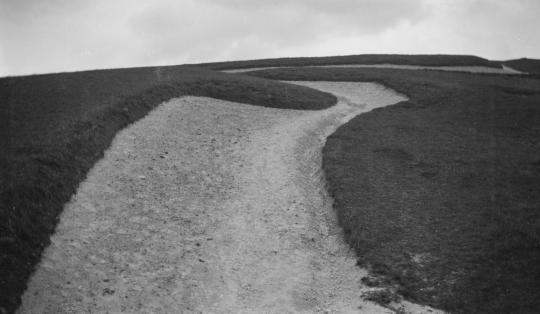
White Horse, Uffington
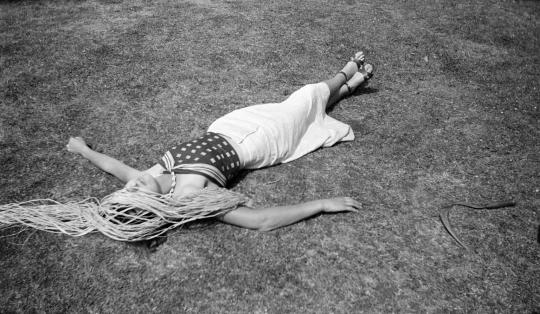
A Woman on a Lawn, Raffia in Her Hair
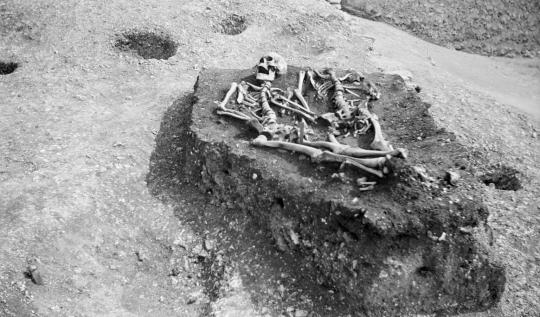
Nest of the Skeletons, Maiden Castle
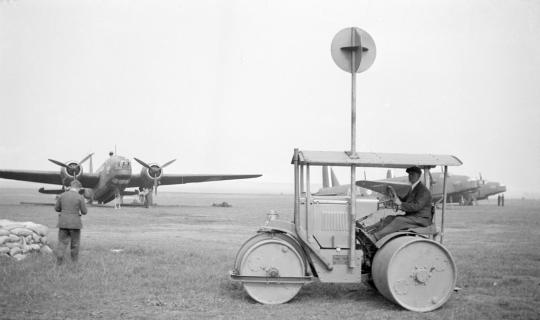
Vickers Wellingtons and steam roller
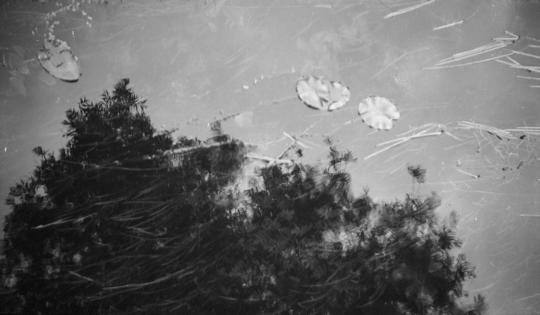
Study of Waterlilies, Hungerford
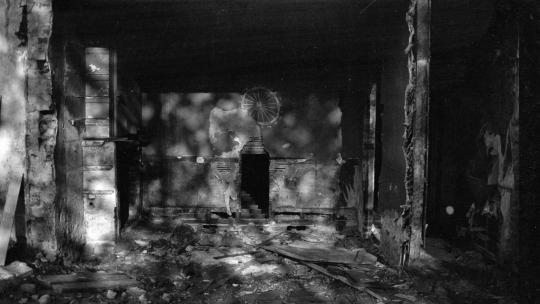
Demolition Landscape
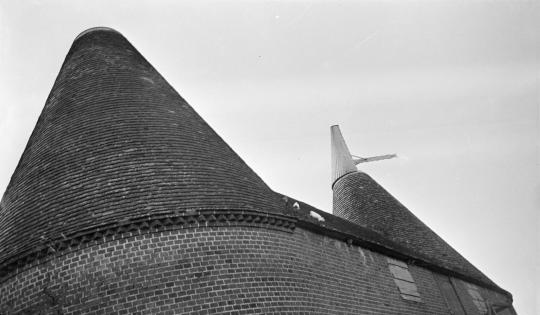
Oast House Roof
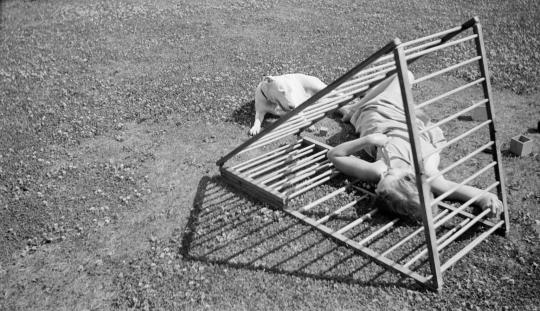
Mrs Bertram and a dog in the garden at the Manor House

The Cowley Dump (WWII Aircraft Recycling Centre)
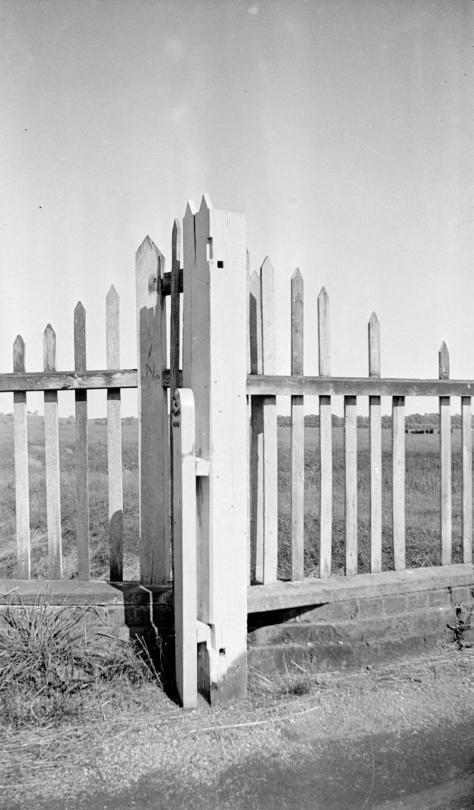
Study of Wood Fencing
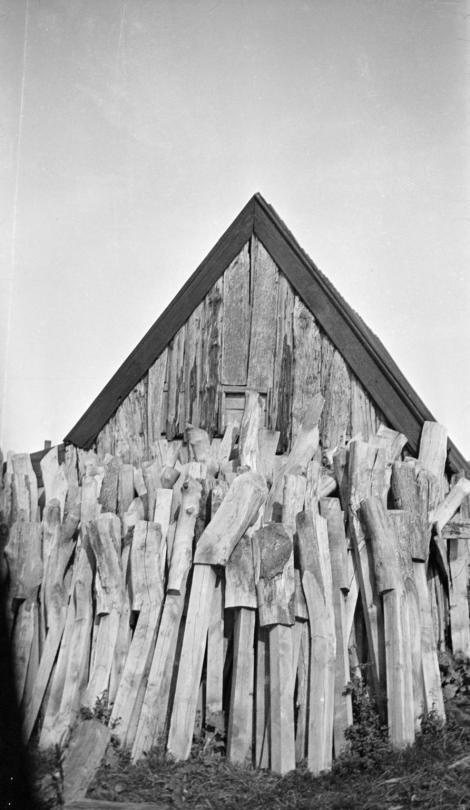
A Woodstack and Barn, Rye

Diving Suit, Drying
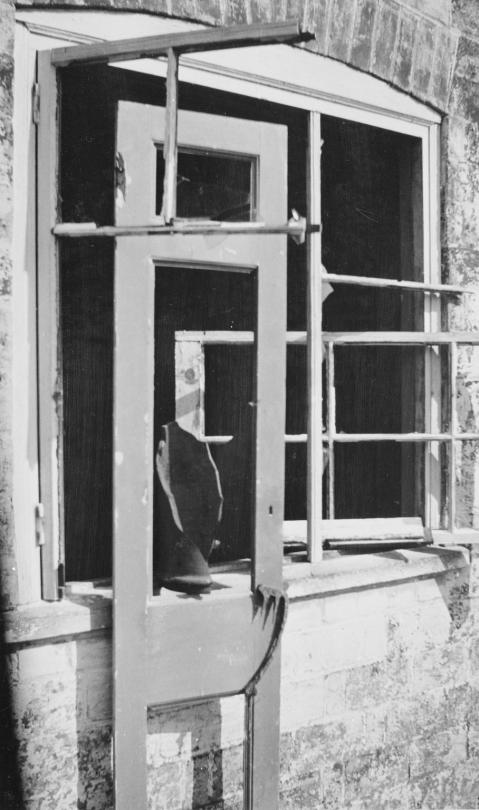
Snape Maltings
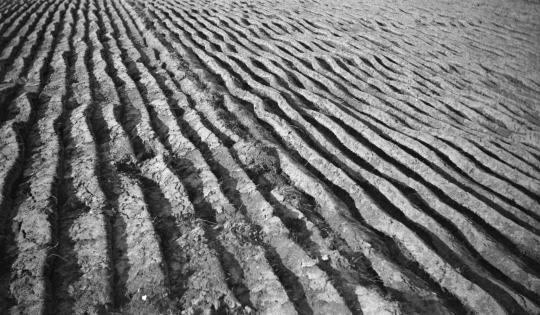
A Ploughed Field
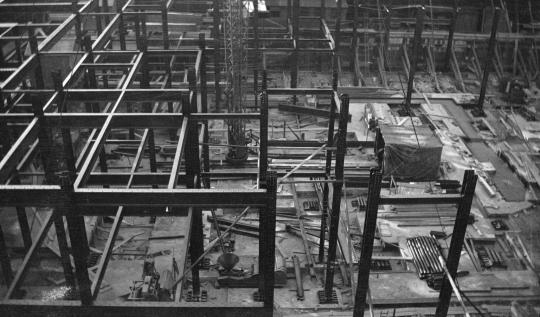
Building Site, in front of St Pancras Station
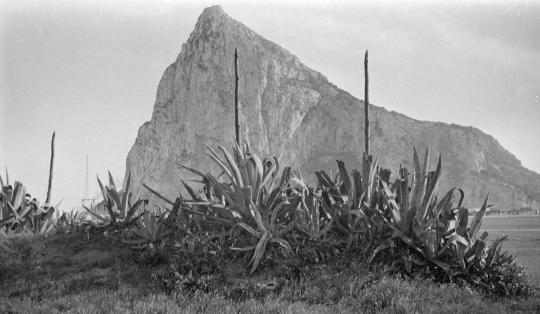
The Rock of Gibraltar
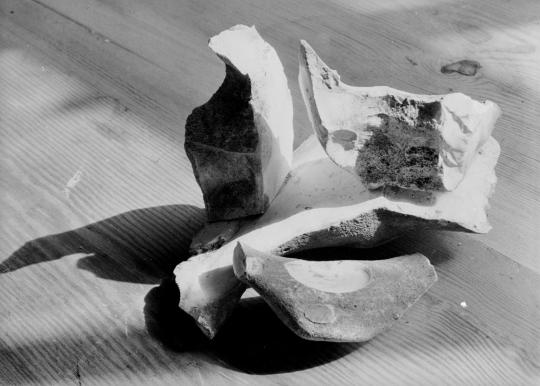
The Nest of Wild Stones
The Penguin Illustrated Classics were a series of books published by Penguin to showcase wood-engraving. Only ten were issued, all in May 1938. Robert Gibbings was the Series Editor and he also illustrated a book too.
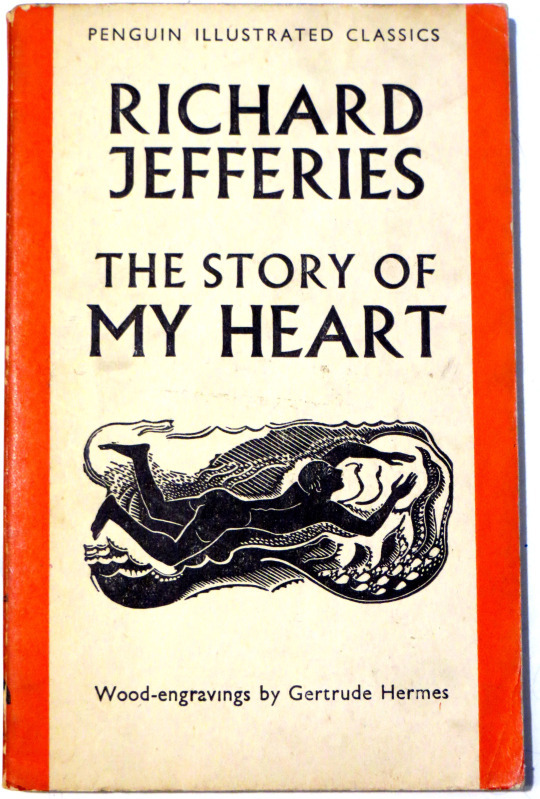
Here is the book illustrated by Gertrude Hermes. Normally her woodcuts are fantastically expensive but as it’s a paperback book, this edition can be found easily and cheaply. A year later Hermes would illustrate another book for Penguin, (the eleventh classic) ‘The Complete Angler’ by Izaak Walton.
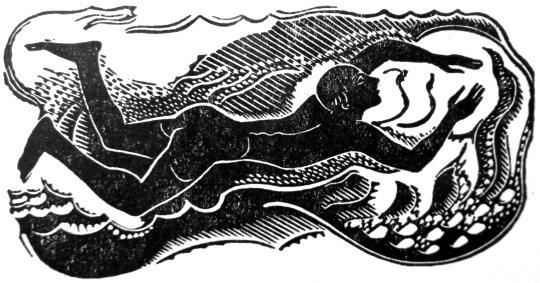
Gertrude Hermes was born on 18 August 1901 in Bickley, Kent. Her parents, were from Altena, near Dortmund, Germany. In about 1921 she attended the Beckenham School of Art, and in 1922 enrolled at Leon Underwood’s Brook Green School of Painting and Sculpture, where other students included Eileen Agar, Raymond Coxon, Henry Moore and Blair Hughes-Stanton, whom she married in 1926, though they separated in 1931, and were divorced in 1933.
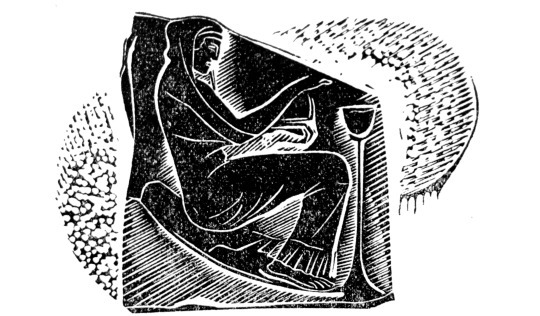
Hermes exhibited regularly at the Royal Academy from 1934, and showed at the Venice International Exhibition in 1939. In 1937 Hermes produced a commission for the British Pavilion at the Paris World Fair. She worked in Canada from 1940 to 1945. She taught wood engraving and linocutting at Central School of Art in London from the late forties to early fifties. She also took a drawing class to London Zoo. She taught wood and lino block printing at the Royal Academy Schools, from 1966. She was elected associate to the Royal Academy in 1963, a full member in 1971 and was appointed an OBE in 1981.
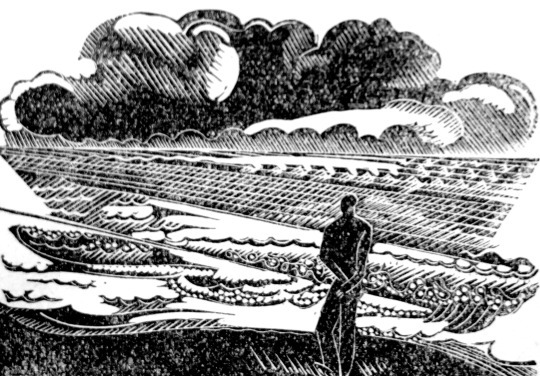
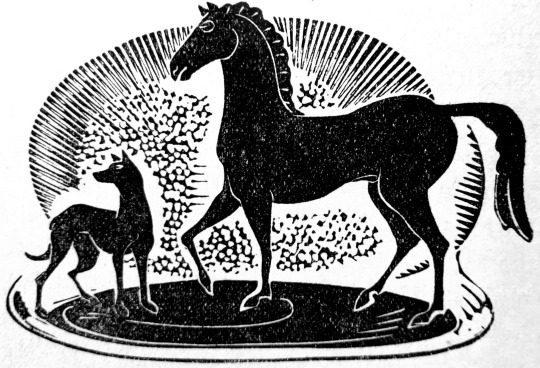
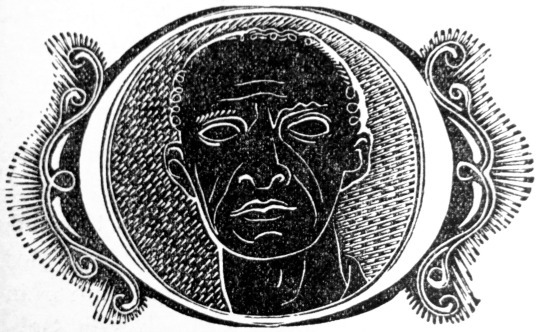

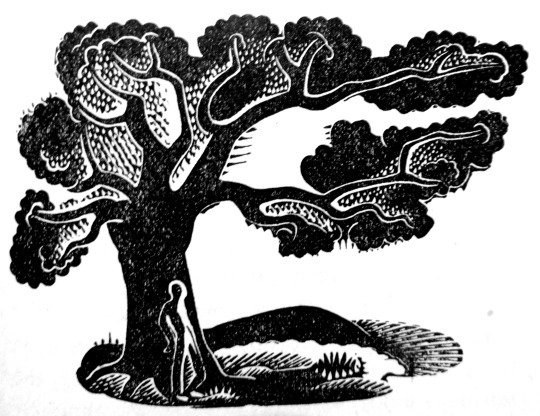
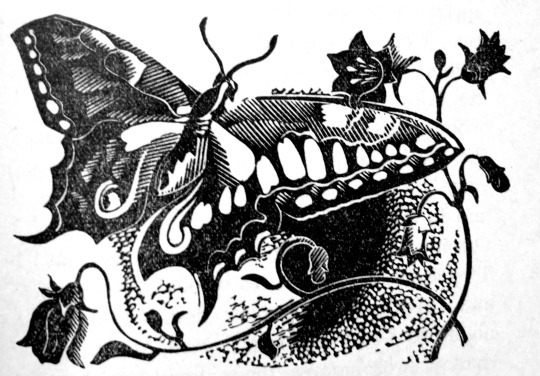
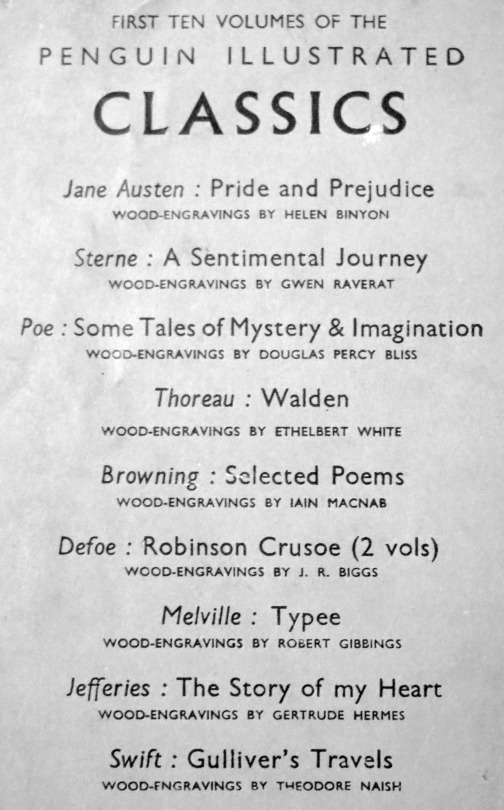
Even before the end of World War II, it was recognised that post-war economic reconstruction, manufacturing and international trade would require the acceptance of Britain as an industrial design and manufacturing source around the world. The pre-war Empire days of British dominance where nearing their end. In 1946, the British Council of Industrial Design held an exhibition called ‘Britain Can Make It.’
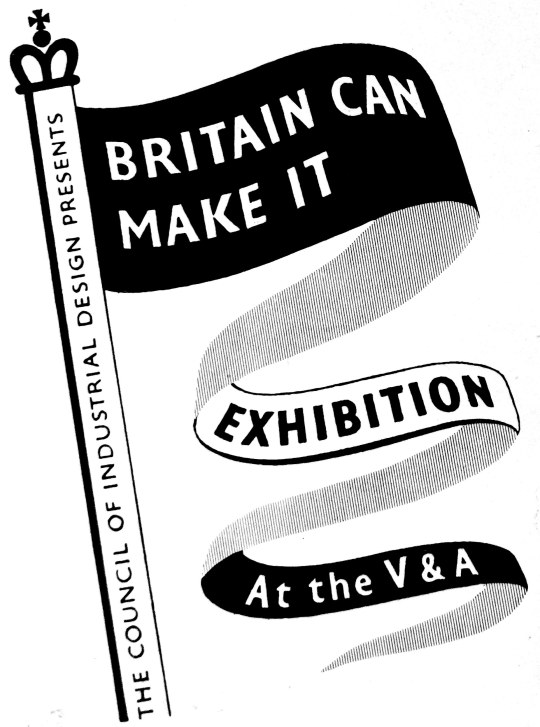
The exhibition was held from September to November at the Victoria and Albert Museum, London. Part of the reason for choosing this venue was that many of the museum’s main exhibits were still in their wartime evacuation storage, outside London. The venue was undamaged by bombing, empty and available, and itself in need of an attraction to restore its pre-war visitors.
Despite severe cutbacks in production during World War II, the concept of ‘good’ design continued to be of importance and was supported by the Utility Scheme introduced in 1941. Enid Marx was a fabric designer for the scheme, as well as for companies like London Transport.
In the catalogue for the exhibition are essays on design by people like Robin Darwin, Gordon Russell and even George Bernard Shaw. I have copied the piece below from the exhibition catalogue as it is an incredibly rare item and the works and opinions of Enid Marx are also hard to find.
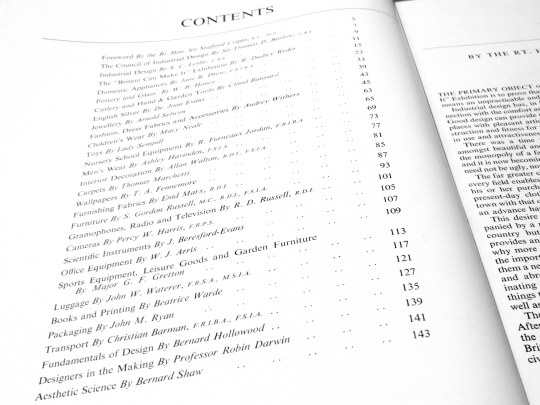
Furnishing Fabrics by Enid Marx
Well over a century has passed since the introduction of machinery revolutionised English textile manufacture and made mass production possible. Since then, technical processes have steadily improved; but it is only quite recently that we have begun to absorb machine-made goods into our aesthetic traditions. Up to now, manufacturers and salesmen have been so concerned with mechanical invention and the chemical problems of synthetic dyes, that all their energies and resources were devoted to these ends. Pattern and design were subordinated to pre-conceived notions of how best to display the elaborate possibilities of the latest mechanical device. Consequently, aesthetic development in English furnishing fabrics stood still for close on a hundred years.
At first sight, this statement may seem a gross exaggeration; but we have only to look at pattern books of early chintzes to realise how little has been done in textile printing in England since, say, 1860, which can compare aesthetically with these designs of the 18th and early 19th centuries. In weaving, too, the brocades and tapestries of this early period have never been surpassed for beauty of design, texture and colour. Imitations and adaptations of these early designs are still best sellers to-day-or, rather, were so before rationing made them unobtainable.
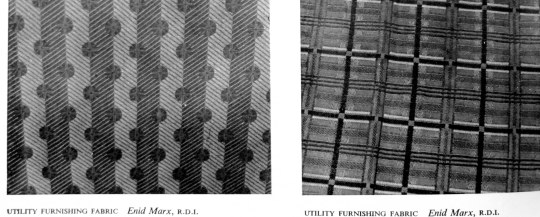
No one would deny that it is easier to achieve high aesthetic standards in hand-woven or printed textiles. All the slight irregularities inevitable in hand-made things enhance their interest and give them vitality. There are not nearly so many steps between the designer and the craftsman and each step is likely to add to, rather than detract from, the beauty of the final result. The converse is true of the mass-produced machine made woven or printed textile. Here each step needs to be carefully thought out at all stages of production if the designers true intentions are to be brought out.

Enid Marx – Spot and Stripe – Morton Sundour Fabrics Limited, for Utility Furnishings.
In England before, and in the early days of the industrial revolution, we had a fine tradition of textile design; the drawing was sensitive, the colours subtle and well used, the textures of the fabrics interesting and of excellent quality. About the time of the Great Exhibition of 1851 we notice a rapid decline in aesthetic standards, and not until the present day has this downward trend begun to reverse itself. Space forbids any attempt to analyse the reasons for this long spell of ugliness, which was by no means confined to England; there are many contributory factors. But one point needs stressing. The decline was not, as is so often stated, due to the use of machinery in itself, but rather to the way in which the machine was used.
William Morris, horrified at the prevailing ugliness, revolted against the machine. How much better if, instead, he had revolted against its misuse and directed his delight in good craftsmanship towards improving machine-made mass production. In looking at his designs for hand block printed textiles we are struck by the way he himself succumbed to the very environment against which he was revolting; they have just that mechanical and wooden quality for which he blamed the machine. It is indeed strange that Morris, with his abounding vitality, should have produced textile designs so lacking in it, in spite of his fine sense of spacing, tone values and the beautiful colours he got through reverting to the old vegetable dyes. Nevertheless that Morris should have had so great an influence on design abroad as well as at home shows how great was the popular demand for an aesthetic revival of the influence of the artist-craftsman.
The vegetable dyes, reintroduced by Morris, have a quality and depth of tone which gives them a richness rarely obtainable with synthetic dyes; though vegetable dyes are incomparably less fast to light. Even today, synthetic dyes tend to be harsh and brittle in colour. Though they can give great brilliance, especially on rayon, this does not make up for their lack of depth. Probably this is because their development has mostly lain in the hands of the chemists who have been fully occupied with the problems of providing colour fastness for the different dying and printing groups, as also for the new yarns and combinations of yarns that are constantly being introduced. We may notice that in France, where standards of fastness are perhaps less high than here, the range of colours used is much more subtle. Our problem is to make our colours as beautiful as they are durable.
After the first world war, new materials of all kinds came on to the market, as they are about to do again. This had a stimulating effect on textile design. To take one example, the development of laminated woods, with their grained surfaces, for furniture helped to revive interest in the textures of furnishing fabrics. Spinning is the clue to woven stuffs; indeed the spinning jenny was one of the first steps on the road to mass production in the late 18th century. With the new interest in textures in the early nineteen twenties, the more enterprising manufacturers began to study the effects obtained by the hand loom weavers using hand-spun yarns. The new interest in, and experiments with, textures started on the Continent, in Germany, Austria and Sweden especially. Our English manufacturers were slower off the mark, a contributory reason being, no doubt, that we had to make a more radical change in outlook; the English textile industry had been built up during the previous century on the basis of supplying world-wide markets, but now, faced with the growth of native textile industries supported by tariffs in foreign countries, and the competition of cheap labour, we had to think increasingly in terms of quality. The so-called ”folk weaves”, though at first a poor imitation of the hand-woven prototype, and, in the early stages, of poor quality, at least introduced the idea of textural variety for furnishing fabrics. Later there followed cotton and linen tweeds, and other rough surface effects, of a more successful nature.
England has, of course, a very long tradition of craftsmanship in weaving. The design of printed textiles responded more slowly to new ideas, than woven ones. The world slump accentuated the problem of printed textiles, namely that the cost of setting up and running an elaborate roller printing machine, with say sixteen colours, requires a very large output for one design, which in turn makes experiments in design costly. But already in the early twenties a number of artists in England had become interested in designing and printing textiles, at first by the hand block method. They achieved considerable success with the decorators and the public. The very simplicity of the means by which they obtained their effects, and the freshness and vitality of their well-drawn designs appealed to the public. Some artists also combined together to design and market screen-printed textiles. Screen printing, being quicker than hand-block printing, was a step towards mass production. It was also adopted by our more enterprising manufacturers as a means of mass production without the heavy initial outlay of roller printing, which therefore made it possible for them to be more venturesome with new designs.
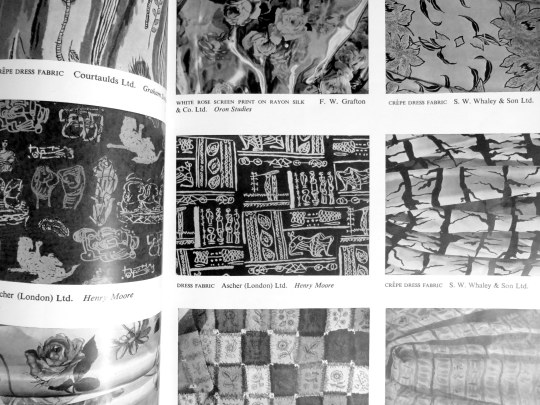
Page from the ‘Britain Can Make It’ exhibition catalogue with designs by Henry Moore and Graham Sutherland.
Hitherto artists had been shy of designing for manufacturers, as they found their designs tended to be changed beyond recognition in the process of manufacture, losing all their individuality. But manufacturers began increasingly to realise the value of artists in bringing in fresh ideas. At last they were prepared to co-operate with the artist in endeavouring to make the final product approximate as closely as possible to the artists original conception, rather than, as hitherto, disregarding the finer points of the design for convenience in production. Such co-operation involves encouraging the artist to work closely with the technical staff. This co-operation has given a much wider range and variety to mass production and appears to be the great hope for the future. Indeed there are many signs that we are standing on the threshold of a great renaissance in English textile design, once the present shortages have been relieved.
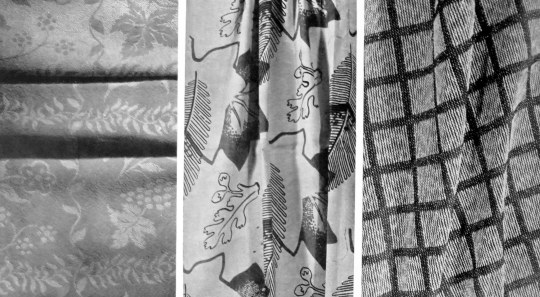
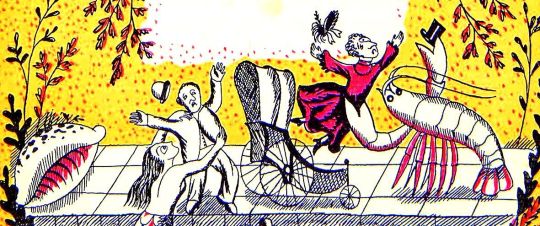
A detail of East Coasting by Edward Bawden
Below is a beautiful limited edition print by Paul Bommer that I own called ‘South Coasting’. It’s inspired by, and expanding upon, Edward Bawden’s illustrations for Dell Leigh’s book ‘East Coasting’.
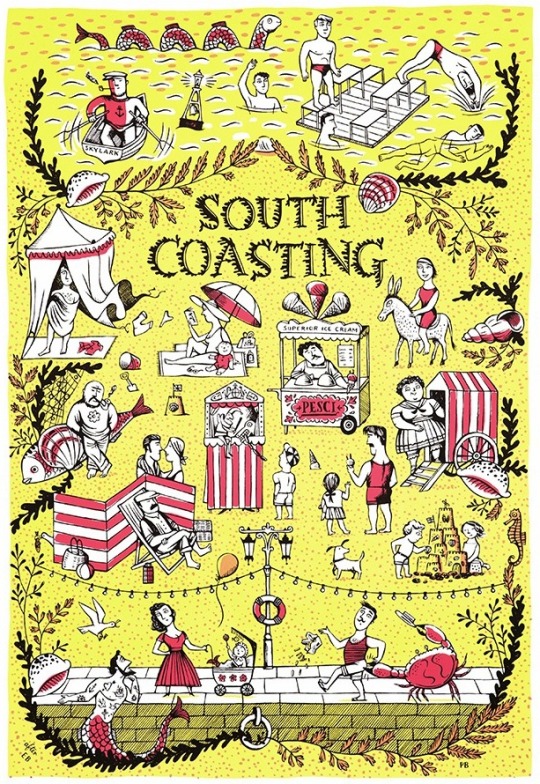
South Coasting by Paul Bommer.
The Bommer ‘South Coasting’ print is an affectionate homage to Bawden’s work as well as an irreverent and joyous celebration of the seaside along Britain’s south coast. Printed in 2013 it’s large at 50cm x 70cm, where as the 1931 Bawden work was just a book illustration.
Written by E.P. Leigh-Bennett under the moniker ‘Dell Leigh’, ‘East Coasting’ was published by London and North Eastern Railways and printed by The Curwen Press.
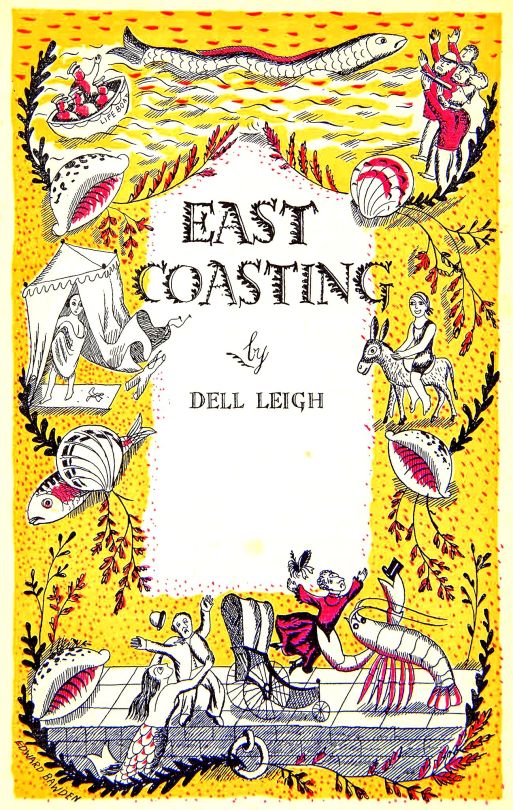
East Coasting by Edward Bawden.
It was a book not to promote the railways, but to promote where they take you. It was an age when the public were using trains for tourism and workers could day trip. Travel companies and unions would offer workers in the city a chance to escape to the countryside.
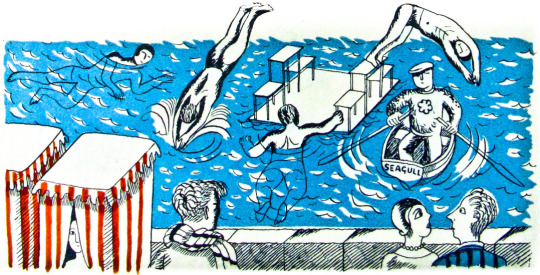
A chapter heading by Edward Bawden.
The railways … helped to boost growth from the 1840s onwards, giving easier, cheaper, faster access to the coast for middling-class families and working-class trippers, and making it possible for Blackpool to become the world’s first working-class seaside resort in the late nineteenth century. By the early twentieth century every English and Welsh coastline was studded with resorts of different sizes, and every possible market could find a congenial holiday home in one or other of well over 100 substantial coastal resorts. †

Paul Bommer’s prints are available here.
† The Seaside Resort: A British cultural export by John K. Walton
Here are two photographs by John Piper and two paintings, both in different styles. They focus on the such of St Clement’s, in Terrington St Clement. A large village in Norfolk, England. It is situated in the drained marshlands to the south of the Wash, 7 miles west of King’s Lynn, Norfolk, and 5 miles east of Sutton Bridge, Lincolnshire, on the old route of the A17 trunk road.
As well as showing the different artistic techniques for one subject, it also shows how Piper used his photographs as a visual reference when back in his studio (as I noted in the post ‘Lens and Pens’).
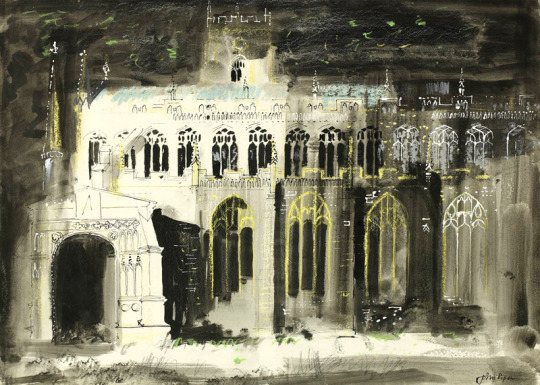
John Piper – Terrington St Clement Church, 1975.
Five years apart between them both, the 1975 painting is a classic Piper picture and I am amazed it wasn’t editioned into a screen-print as the levels of detail in it are remarkable, the blocked out lighter panels of the windows and reversed light outline of the bell tower against the typical Piper sky.
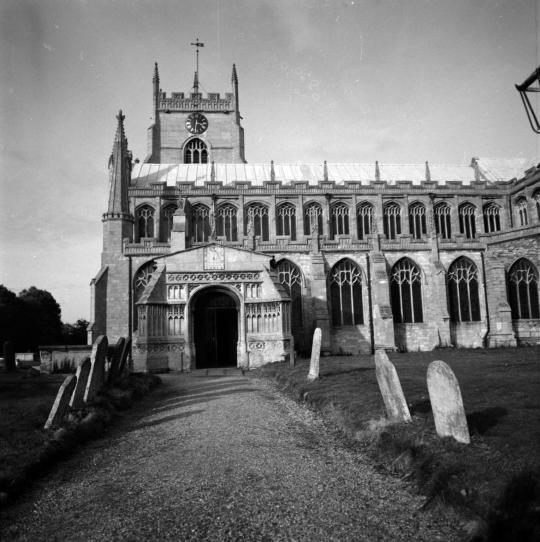
John Piper – Terrington St Clement Church, Norfolk.

John Piper – Knowlton Church, Dorset, 1938
The picture below from 1980 is far more abstract and wild with colour. It is looking more like a study of a painting. The outlines and abstracted features of the building draughtsmanship are typically Piper. Although the colouring may not look like his works at that time, I would suggest they are a throwback to when Piper used collage in the 1930s. As with the Knowlton Church collage, blocks of colour are used with outlines. It makes an interesting marriage of new and old techniques.
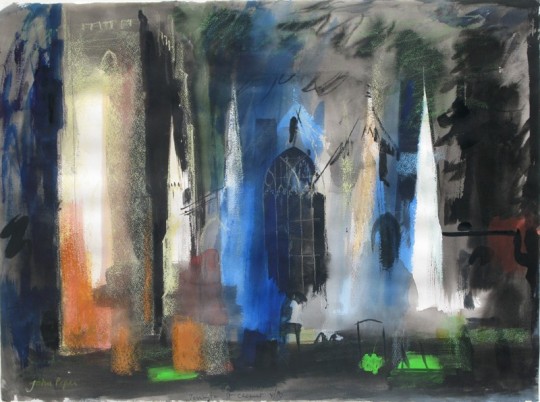
John Piper – Terrington St Clement Church, 1980
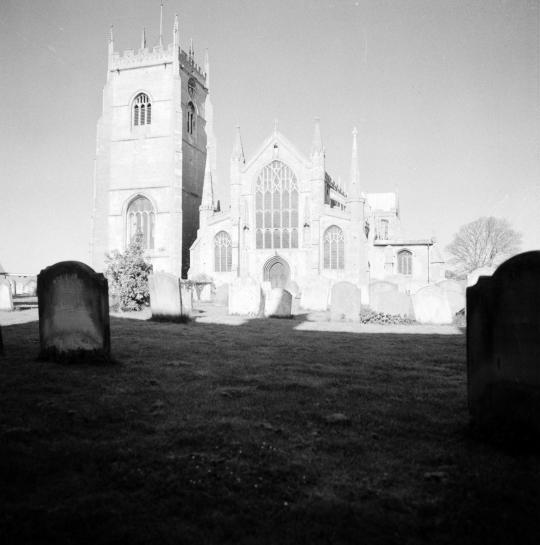
John Piper – Terrington St Clement Church, Norfolk.
Below is a video I found on Youtube of a drone flight around the church, I wonder what Piper would have made of such a technology?
I found a picture online by Kenneth Rowntree called ‘A Welsh Chapel’, painted in 1948. It was the same year Rowntree illustrated the King Penguin book ‘A Prospect of Wales’ so it maybe a study for that book, or it could have been work from the Recording Britain project. Either way, I thought it was sad to leave the picture without a location in the details, so I set about finding it.
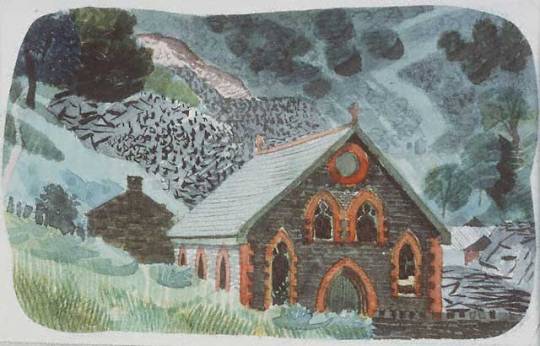
Kenneth Rowntree – A Welsh Chapel, 1948.
I searched on google images. After looking over pages and pages of ‘Welsh Chapel’ pictures on google I found a picture from a news report on the Daily Mail. (this has happened before with my picture of Downton) (I will add I hate the Daily Mail). The story was: Homeowners offer £1,000 reward for anyone who helps them to sell their £199,000 chapel through Twitter and Facebook. ‡
As you can see, the brickwork and windows match the paintings.
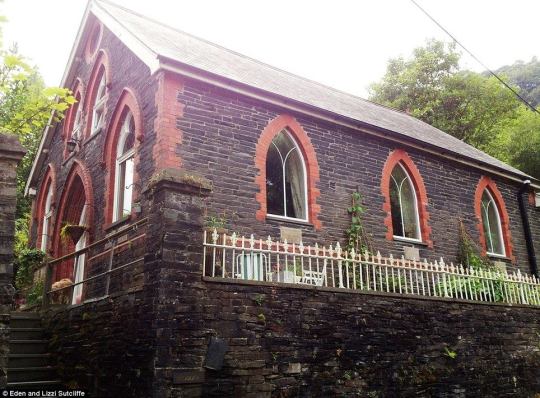

So next I wanted to make sure of the surroundings and I found a Street View picture on Google Maps of the Chapel, with the hills and houses behind it. I had it confirmed by proxy, by Peter Wakelin. The location is Corris, Merionethshire, off the A487.

After looking in my copy of ‘A Prospect of Wales’ I found the picture below is featured as the 9th plate. It’s a picture of the School in Corris.

Kenneth Rowntree – School at Upper Corris, with Cader Idris, 1948.
Rowntree’s Wales is a hard-edged world of slate and stone, of country chapels, miners’ cottages, abandoned lead works, hill farms, remote schools and dry-stone walls. His eye for the ordinary and overlooked is as sharp as it is for the less familiar. Lettering, incised on tombstones or colourfully inscribed on shop fronts, is lovingly recreated; traffic signs, telegraph poles and other man-made structures become equally arresting elements in the composition. †
† http://www.independent.co.uk/news/obituaries/obituary-kenneth-rowntree-1271123.html
‡ http://www.dailymail.co.uk/news/article-2551620/Pray-quick-sale-Homeowners-offer-1-000-reward-helps-sell-199-000-chapel-Twitter-Facebook.html

The Damned was Joseph Losey’s 1963 film for Hammer Film Productions. (It is Losey who also directed one of my favourite films ‘The Servant’ the same year).

The Damned features teddy boy thugs and nuclear science fiction, it’s really rather odd. The plot revolves around a sculpture called Freya Neilson. The sculptures featured are all by British artist Elisabeth Frink.

Frink not only lent these but also was on location for their shooting and coached Lindfors on performing the sculptor’s method of building up plaster, which was then ferociously worked and carved. According to Evan Jones (interview with the author), Frink was around for all the location shooting, seemed to thoroughly enjoy the process, and became quite good friends with Losey and members of the crew. There is no evidence that she was paid. She did receive a prominent screen credit, however, and there is anecdotal evidence that Frink welcomed the exposure, and that it enhanced her career. †

Elisabeth Frink – Bird, 1959
The experience of growing up during the war years strongly affected Frink’s sculpture. This work is one of a number of bronzes, executed in the 1950s, in which animal forms are given a menacing, military appearance. Although only thirty-eight centimetres high, this bird appears simultaneously aggressive, powerful and like a damaged but defiant survivor of a nuclear attack. Typical of the sculptor’s early work, the distressed, textured surface and spindly, striding legs of the bird recall the work of Giacometti, who Frink cited as a great influence. ‡

† Real Objects in Unreal Situations: Modern Art in Fiction Films by Susan Felleman, 2014. p258. 9781783202508
‡ https://www.nationalgalleries.org/collection/artists-a-z/f/artist/elisabeth-frink/object/bird-gma-1108